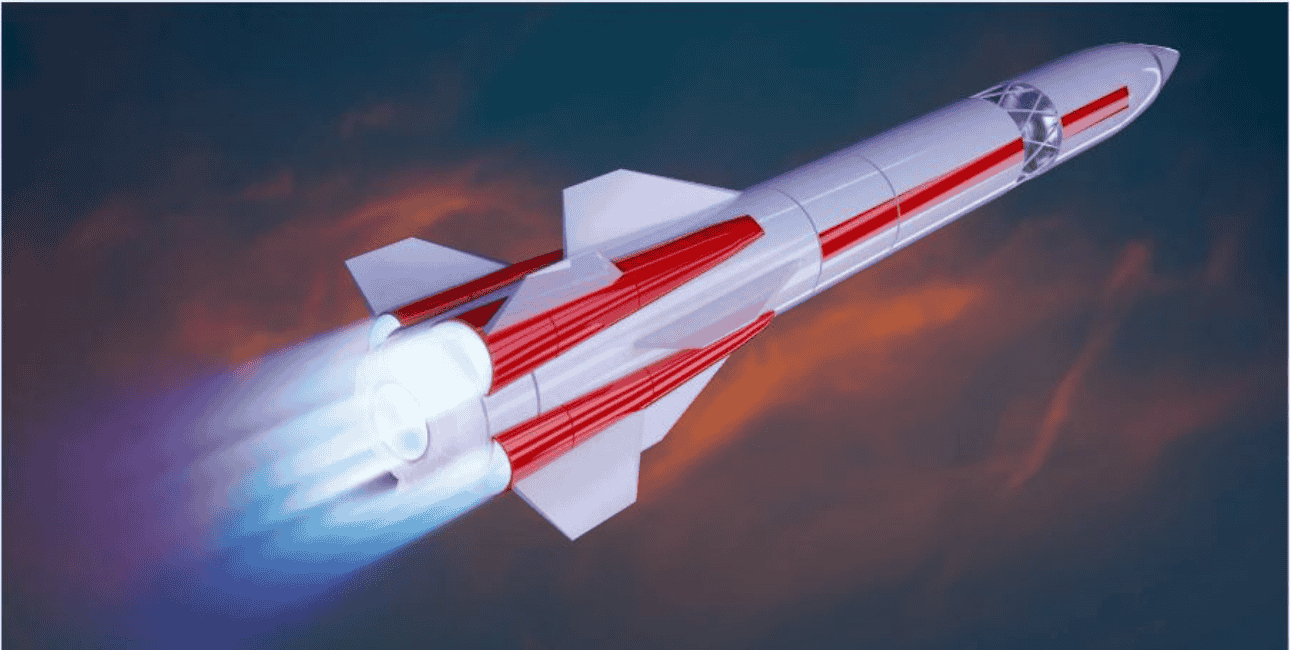The U.S. Navy has officially canceled its Hypersonic Air-Launched Offensive Anti-Surface (HALO) missile program, a key component of its Offensive Anti-Surface Warfare Increment 2 (OASuW Inc 2) initiative.
HALO was intended to provide a long-range, high-speed, air-launched missile capable of neutralizing enemy warships at hypersonic speeds. However, a combination of budget constraints, technical challenges, and shifting strategic priorities has led to its discontinuation.
“The Navy canceled the solicitation for the Hypersonic Air-Launched Offensive Anti-Surface Warfare (HALO) Engineering and Manufacturing Development (EMD) effort in fall 2024 due to budgetary constraints that prevent fielding new capability within the planned delivery schedule,” said Navy spokesperson Capt. Ron Flanders.
“The decision was made after the Navy conducted a careful analysis, looking at cost trends and program performance across the munitions industrial base compared to the Navy’s priorities and existing fiscal commitments,” he added.
Initial HALO contracts were awarded in 2023 to defense giants Raytheon and Lockheed Martin. Although few details about their designs were made public, both proposals were widely believed to incorporate advanced propulsion technologies, such as ramjet or scramjet engines, designed to achieve sustained hypersonic speeds.

These systems were initially planned for deployment on F/A-18E/F Super Hornets, with the long-term goal of adapting them for ship- and submarine-based platforms as well.
Both companies had also participated in DARPA’s Hypersonic Airbreathing Weapon Concept (HAWC) program, which laid the groundwork for the U.S. Air Force’s Hypersonic Attack Cruise Missile (HACM) initiative.
Raytheon, for instance, partnered with Northrop Grumman on both HAWC and HACM, aiming to fulfill the Air Force’s ambition to field a next-generation hypersonic cruise missile. Despite this technical lineage and institutional knowledge, HALO ultimately could not overcome the financial and logistical obstacles stacked against it.
The HALO cancellation follows closely on the heels of another hypersonic disappointment: the U.S. Air Force’s halting of the Air-launched Rapid Response Weapon (ARRW) program. The ARRW, led by Lockheed Martin, aimed to deploy a hypersonic glide vehicle from a B-52 bomber, reaching speeds exceeding Mach 5.
Golden Dome Or Golden Mirage? Is Trump Chasing A Dream As Critics Say Golden Dome Is Not Feasible?
The program suffered a series of failures, technical complications, and design limitations, ultimately leading to its shelving.
ARRW’s trajectory—marked by persistent testing challenges and inconsistent performance—revealed the deep-seated complexities of hypersonic weapon development. Even continued funding could not rescue the program from a growing sense of strategic doubt within the Pentagon.
Budget Constraints And Technical Hurdles Undermine U.S. Hypersonic Push
These twin program cancellations represent more than isolated platform failures; they reflect a broader shift in the United States’ approach to hypersonic weapons development. Long touted as essential to maintaining technological parity with peer competitors such as China and Russia, hypersonic missiles were seen as the next leap in precision strike capability, designed to evade even the most sophisticated missile defense systems.
The abrupt retreat from both HALO and ARRW suggests a more sober reassessment of cost, feasibility, and actual wartime utility.
The Navy’s revised posture is especially notable. Rather than pursue hypersonic capabilities at any price, the service is doubling down on modernizing and fielding systems that are proven, dependable, and operational.
A cornerstone of this revised approach is the Long-Range Anti-Ship Missile (LRASM), which builds on the subsonic AGM-158 Joint Air-to-Surface Standoff Missile (JASSM) platform. While LRASM lacks the velocity of hypersonic designs, it compensates with precision guidance, stealth capabilities, and real-world deployability.
A next-generation LRASM variant, promising extended range and enhanced survivability, is already in the pipeline. Alongside it, the Navy has fielded the AIM-174B missile—an air-launched variant derived from the Standard Missile-6 (SM-6) family.
Originally intended as a surface-launched multi-mission system, including anti-air and land-attack roles, the AIM-174B is now being eyed as a versatile, high-speed anti-ship weapon.
This more restrained, platform-centric strategy reflects a recognition that technological ambition must be grounded in practical deliverability.
The HALO and ARRW experiences have underscored the stubborn engineering challenges associated with hypersonic flight, ranging from propulsion and heat shielding to targeting precision. In an increasingly constrained fiscal environment, the Pentagon is opting to refine existing technologies rather than gamble further on uncertain returns.
Reassessing America’s Hypersonic Ambitions
Even as the United States reassesses its posture, its adversaries continue pressing forward. Russia and China have made significant strides in fielding hypersonic systems, which are steadily redefining the balance of power in advanced missile warfare.
Russia’s Kinzhal missile has already been used in the Ukraine conflict, marking one of the few known combat deployments of a weapon operating at hypersonic speeds.
While Western analysts have debated whether Kinzhal qualifies as a true hypersonic weapon, given its ballistic missile origins and potential vulnerabilities to interception, its operational use demonstrates Moscow’s willingness to field high-speed weapons in contested environments.
China, meanwhile, has opted for a methodical, doctrine-driven strategy. The DF-17 hypersonic glide vehicle, showcased in national military parades, has reportedly been inducted into the People’s Liberation Army Rocket Force.
Although it has yet to be tested in combat, its deployment sends a strong signal that Beijing is serious about integrating hypersonic technologies into its military playbook. Experts suggest that the DF-17, designed to maneuver unpredictably at high speeds, poses a credible threat to existing U.S. and allied missile defenses, particularly in the Indo-Pacific.
In contrast, the United States appears to be retrenching. This cautious turn, however, risks leaving the U.S. behind in a fast-moving arms race. By prioritizing cost-effectiveness, interoperability, and near-term readiness over high-risk innovation, Washington may be trading away future advantages in favor of immediate reliability. The challenge lies in balancing these competing imperatives without ceding strategic ground to more aggressive rivals.
As Russia and China continue to expand and refine their hypersonic arsenals, the United States must decide whether its current posture reflects a tactical pause or a long-term retreat.
- Via: ET News Desk
- Mail us at: editor (at) eurasiantimes.com




